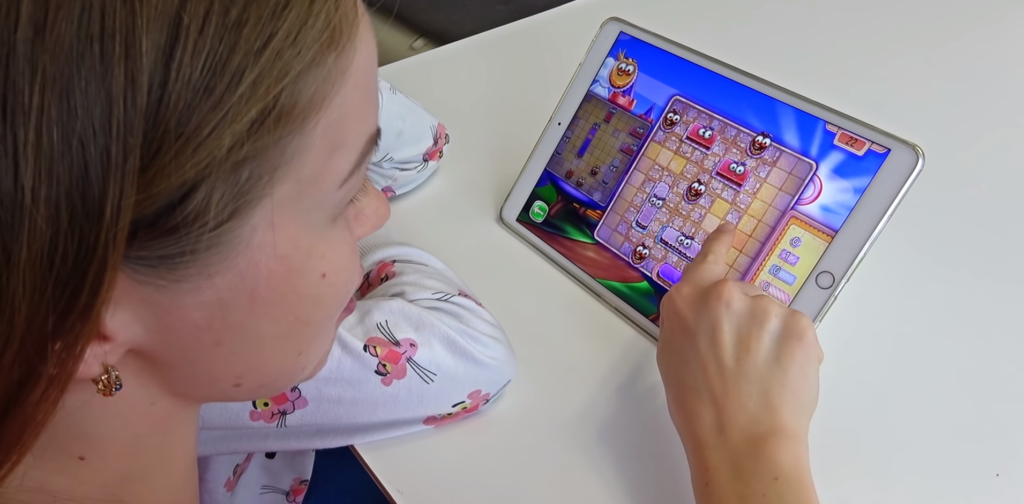In recent years, there has been a growing demand for family-friendly options in the gaming market. Mobile gaming is quickly becoming another form of family entertainment. In a world where families often feel disconnected by mobile phone use, family-friendly games are giving a great opportunity for children and parents to bond. What can we expect when it comes to players’ preferences and how may this affect business opportunities?
Let’s begin with statistical data regarding game industry size and audience ages:
- The global games industry reached the $137 billion mark in 2018. The video games market could expand to a $300 billion industry by 2025;
- Mobile gaming represents $70 billion or 51 percent of the market. It is expected to reach a $100 billion level in 2021.
- The number of gamers worldwide rose to 2.3 billion.
On average adults are spending about seven hours weekly playing video games. This is an increase from the roughly six hours a week reported last year. The largest demographic of players are adults aged 26 to 36. This demographic plays about 8.5 hours per week.
- Kids from ages 8 to 12 are playing 2 hours a day, averaging about 14 hours a week.
- Teens 13 to 17 years old play 2-2.5 hours on average per day.
- Kids between the ages of 2 and 4 play an average of 21 min per day.
- 5-years-old kids spend 42 min per day on average playing video games.
Huge Opportunities for Business
As the genre for family-friendly games expands, it has created vast opportunities for game developers over recent years. Considering there are 2.3 billion potential consumers (28 percent of those are under the age of 18), companies have a large field for dynamic development. Larger companies have the biggest market share. 25 percent of the main players in this industry generate 80 percent of the revenue.
Such IT giants have more resources to invest in innovation and product development. They also have the budget to spend vast amounts on marketing.
Market conditions always change. Customer needs and behavior also change over time. Smaller companies have a better chance of gaining more of the industry revenue as technology improves. In such circumstances, the companies which are leaders today are not guaranteed to hold their status tomorrow. New government regulations are another factor affecting the entire industry. All of these factors create new business opportunities.
Gaming is Spreading to All Generations
Nowadays mobile games are characterized by mass accessibility. Most people have a game they love and virtually everybody has a gaming device. Through accessibility and mobile devices, gaming has become multi-generational.
Previous generations of gamers (X, Y, Z) have kids and in some cases, those kids have kids too. All three of these generations have grown up playing video games. Families and friend groups seek opportunities to engage with high-quality mobile games they can enjoy together for a shared experience.

Because of this, parents are more informed about their children’s game preferences. When we were kids our parents had no idea what games we were playing:
- 94 percent of parents are worried about the risks of playing games.
- More than 70 percent are concerned about violence and sexual imagery in games.
- More parents are more involved in monitoring the games that their kids are fond of allowing them to play 17h a week

Mobile gaming is becoming an accepted form of entertainment and part of the mass culture. eSports and college scholarships for gaming receive government support allowing amateurs to become professional gamers. Today you also have television networks dedicated to gaming.
Gaming: Social Responsibility and Psychosocial Adjustment
Scientists aim to explore the positive and negative impacts gaming has on children. Using these surveys to fuel innovation could lead to a strong boost in the game development business.
Take a look at the results of a survey conducted by the American Academy of Pediatrics with roughly 2500 males and females ages 10 and 15 years old:
- A low level of game engagement is about 1 hour per day or less – Positive impact. It is associated with high levels of life satisfaction, prosocial behavior, and lower amounts of externalizing (forms of aggression) or internalizing problems (depression).
- Mid-level – 2 hours per day – Neutral impact. Have no noticeable differences from players who are not gamers. No effects were observed.
- High level – 3 hours or more – Negative impact. It is associated with low levels of life satisfaction and higher amounts of depression and aggression.
Positive effects: problem-solving and logic, hand-eye coordination (fine motor and spatial skills), planning and resource management, multitasking (many varieties at once), quick thinking (analysis and decision-making), strategic thinking, and perseverance.
Negative effects: increased aggressive thoughts (too much-simulated violence), addiction, harm to the brain, reward for wrong values, decreased academic achievement, decreased concentration.
Family-friendly gaming has become a part of the connection between younger generations and adults. To benefit from it, developers have to understand the basics of children’s psychology to implement positive impacts. Mobile gaming has great potential to become an instrument of education and not only a form of entertainment






